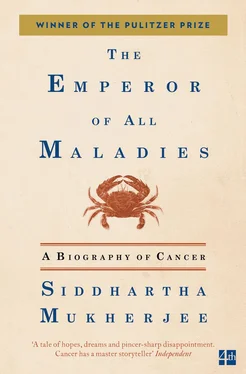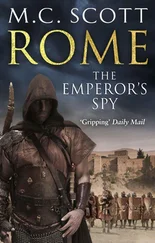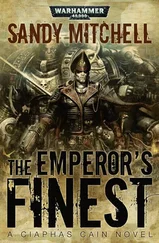The act created a new scientific unit called the National Cancer Institute (NCI), designed to coordinate cancer research and education.* An advisory council of scientists 57for the institute was assembled from universities and hospitals. A state-of-the-art laboratory space, with gleaming halls and conference rooms, was built among leafy arcades and gardens in suburban Bethesda, a few miles from the nation’s capital. “The nation is marshaling its forces 58to conquer cancer, the greatest scourge that has ever assailed the human race,” Senator Bone announced reassuringly while breaking ground for the building on October 3, 1938. After nearly two decades of largely fruitless efforts, a coordinated national response to cancer seemed to be on its way at last.
All of this was a bold, brave step in the right direction—except for its timing. By the early winter of 1938, just months after the inauguration of the NCI campus in Bethesda, the battle against cancer was overshadowed by the tremors of a different kind of war. In November, Nazi troops embarked on a nationwide pogrom against Jews in Germany, forcing thousands into concentration camps. By late winter, military conflicts had broken out all over Asia and Europe, setting the stage for World War II. By 1939, those skirmishes had fully ignited, and in December 1941, America was drawn inextricably into the global conflagration.
The war necessitated a dramatic reordering of priorities. The U.S. Marine Hospital 59in Baltimore, which the NCI had once hoped to convert into a clinical cancer center, was now swiftly reconfigured into a war hospital. Scientific research funding stagnated and was shunted into projects directly relevant to the war. Scientists, lobbyists, physicians, and surgeons fell off the public radar screen—“mostly silent,” 60as one researcher recalled, “their contributions usually summarized in obituaries.”
An obituary might as well have been written for the National Cancer Institute. Congress’s promised funds for a “programmatic response to cancer” 61never materialized, and the NCI languished in neglect. Outfitted with every modern facility imaginable in the 1940s, the institute’s sparkling campus turned into a scientific ghost town. One scientist jokingly called it “a nice quiet place out here in the country. 62In those days,” the author continued, “it was pleasant to drowse under the large, sunny windows.”*
The social outcry about cancer also drifted into silence. After the brief flurry of attention in the press, cancer again became the great unmentionable, the whispered-about disease that no one spoke about publicly. In the early 1950s, Fanny Rosenow 63, a breast cancer survivor and cancer advocate, called the New York Times to post an advertisement for a support group for women with breast cancer. Rosenow was put through, puzzlingly, to the society editor of the newspaper. When she asked about placing her announcement, a long pause followed. “I’m sorry, Ms. Rosenow, but the Times cannot publish the word breast or the word cancer in its pages. 64
“Perhaps,” the editor continued, “you could say there will be a meeting about diseases of the chest wall.”
Rosenow hung up, disgusted.

When Farber entered the world of cancer in 1947, the public outcry of the past decade had dissipated. Cancer had again become a politically silent illness. In the airy wards of the Children’s Hospital, doctors and patients fought their private battles against cancer. In the tunnels downstairs, Farber fought an even more private battle with his chemicals and experiments.
This isolation was key to Farber’s early success. Insulated from the spotlights of public scrutiny, he worked on a small, obscure piece of the puzzle. Leukemia was an orphan disease, abandoned by internists, who had no drugs to offer for it, and by surgeons, who could not possibly operate on blood. “Leukemia,” as one physician put it 65, “in some senses, had not [even] been cancer before World War II.” The illness lived on the borderlands of illnesses, a pariah lurking between disciplines and departments—not unlike Farber himself.
If leukemia “belonged” anywhere 66, it was within hematology, the study of normal blood. If a cure for it was to be found, Farber reasoned, it would be found by studying blood. If he could uncover how normal blood cells were generated, he might stumble backward into a way to block the growth of abnormal leukemic cells. His strategy, then, was to approach the disease from the normal to the abnormal—to confront cancer in reverse.
Much of what Farber knew about normal blood he had learned from George Minot. A thin, balding aristocrat with pale, intense eyes, Minot ran a laboratory in a colonnaded, brick-and-stone structure off Harrison Avenue in Boston, just a few miles down the road from the sprawling hospital complex on Longwood Avenue that included Children’s Hospital. Like many hematologists at Harvard, Farber had trained briefly with Minot in the 1920s before joining the staff at Children’s.
Every decade has a unique hematological riddle, and for Minot’s era, that riddle was pernicious anemia. Anemia is the deficiency of red blood cells—and its most common form arises from a lack of iron, a crucial nutrient used to build red blood cells. But pernicious anemia, the rare variant that Minot studied, was not caused by iron deficiency (indeed, its name derives from its intransigence to the standard treatment of anemia with iron). By feeding patients increasingly macabre concoctions—half a pound of chicken liver 67, half-cooked hamburgers, raw hog stomach, and even once the regurgitated gastric juices 68of one of his students (spiced up with butter, lemon, and parsley 69)—Minot and his team of researchers 70conclusively demonstrated in 1926 71that pernicious anemia was caused by the lack of a critical micronutrient, a single molecule later identified as vitamin B12. In 1934, Minot and two of his colleagues 72won the Nobel Prize for this pathbreaking work. Minot had shown that replacing a single molecule could restore the normalcy of blood in this complex hematological disease. Blood was an organ whose activity could be turned on and off by molecular switches.
There was another form of nutritional anemia that Minot’s group had not tackled, an anemia just as “pernicious”—although in the moral sense of that word. Eight thousand miles away, in the cloth mills of Bombay 73(owned by English traders and managed by their cutthroat local middlemen), wages had been driven to such low levels that the mill workers lived in abject poverty, malnourished and without medical care. When English physicians tested these mill workers in the 1920s to study the effects of this chronic malnutrition, they discovered that many of them, particularly women after childbirth, were severely anemic. (This was yet another colonial fascination: to create the conditions of misery in a population, then subject it to social or medical experimentation.)
In 1928, a young English physician named Lucy Wills, 74freshly out of the London School of Medicine for Women, traveled on a grant to Bombay to study this anemia. Wills was an exotic among hematologists, an adventurous woman driven by a powerful curiosity about blood willing to travel to a faraway country to solve a mysterious anemia on a whim. She knew of Minot’s work. But unlike Minot’s anemia, she found that the anemia in Bombay couldn’t be reversed by Minot’s concoctions or by vitamin B12. Astonishingly, she found she could cure it with Marmite, the dark, yeasty spread then popular among health fanatics in England and Australia. Wills could not determine the key chemical nutrient of Marmite. She called it the Wills factor 75.
Читать дальше













